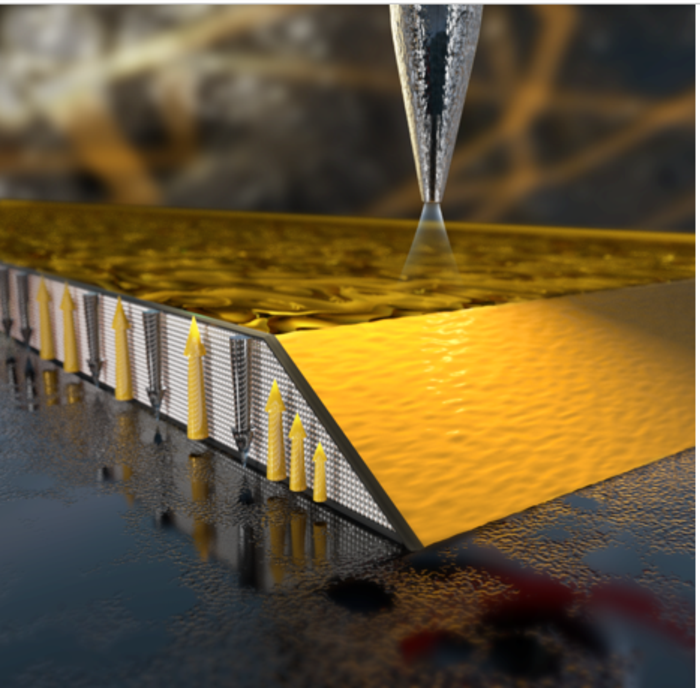Apr 13 2022Reviewed by Alex Smith
Exploring the realm of the extraordinarily small is fascinating for physicists. Completely new and unanticipated phenomena are revealed at the nanometer scale where materials measuring as thin as 100 atoms are examined. In this realm, nature stops behaving in a way that is foreseeable by the macroscopic law of physics, in contrast to what occurs in the real world or out in space.
 Illustration of edge magnetism discovered in CrGeTe3 using nanoscale magnetic microscopy. Image Credit: Ori Lerman
Illustration of edge magnetism discovered in CrGeTe3 using nanoscale magnetic microscopy. Image Credit: Ori Lerman
Dr. Yonathan Anahory from the Hebrew University of Jerusalem (HU)’s Racah Institute of Physics guided the research team comprising HU doctoral student Avia Noah. He spoke of his surprise when examining the images of the magnetism produced by nano-magnets, “it was the first time we saw a magnet behaving this way," as he defined the images that exposed the occurrence of "edge magnetism."
The images revealed that the magnetic material the HU scientists were exploring only preserved magnetism on its edge—in truth only within 10 nm of the edge (keep in mind a human hair measures about 100,000 nm). Their results have been reported in the esteemed journal Nano Letters.
This nano-effect, although minuscule, could really have broad applications in everyday life.
In today's technological race to make every component smaller and more energy efficient, effort is focused towards small magnets with different shapes.
Dr. Yonathan Anahory, Racah Institute of Physics, Hebrew University of Jerusalem
The new edge magnetism provides the opportunity to make long wire magnets measuring just 10 nm in thickness, which can be carved into any shape. "It could revolutionize the way we make spintronics devices," added Anahory, denoting the advanced nano-electronic devices with minimal power consumption and improved memory and processing competencies.
The actual finding of edge magnetism was rather unexpected: Anahory chose to explore a new magnetic nano-material (CGT) created by his colleague at the Universidad Autónoma de Madrid, in Spain. The discovery depended on images created by a new type of magnetic microscopy built in Israel, which can compute the magnetic field of a single electron.
The discovery of new occurrences relies on very advanced new technologies. Furthermore, the occurrences themselves will be at the center of even more progressive technologies as edge magnetism has exhibited.
Journal Reference:
Noah, A., et al. (2022) Interior and Edge Magnetization in Thin Exfoliated CrGeTe3 Films. Nano Letters. doi.org/10.1021/acs.nanolett.1c04665.
Source: https://en.huji.ac.il/en